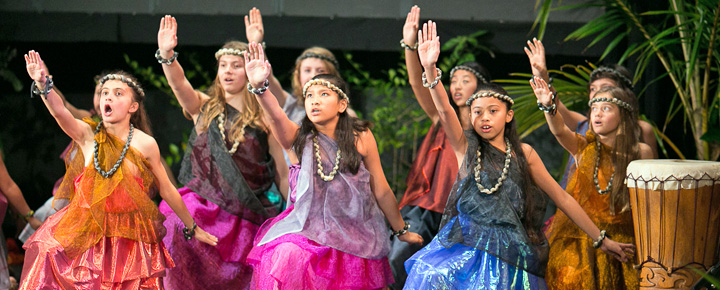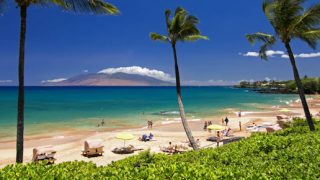Hawaii has once again been named the happiest state in the U.S., returning to top WalletHub’s annual ranking based on emotional and physical well-being, community, and environment. Why is this a paradox? Some of you have mentioned in comments that the Aloha spirit is sometimes lacking. One of our readers left this comment recently:
“Aloha Jeff & Rob- I would think as residents you two would have a better perspective than most of us about whether the aloha spirit is fading. I am a frequent visitor to your island and have noticed a bit of this but not too much. What do you think? Thanks, Jon D.”
That’s not easy to answer, Jon. While this may seem like a given—Hawaii is globally famous for its stunning landscapes and warm Aloha spirit—the reality is far more complex. Despite its reputation for happiness, residents face significant challenges related to the high cost of living, housing shortages, and the impact of natural disasters. So, how does Hawaii consistently rank as the happiest state, and what does this mean for its visitors?
Well-being and the Aloha spirit.
The Aloha spirit is at the core of what makes Hawaii such a happy place. Even in the face of economic challenges, the island’s culture of kindness, hospitality, and mutual respect creates an environment where people thrive emotionally. Sometimes, that is not easy, which we’ll tell you more about today.
At the core, however, is a focus on maintaining strong relationships, practicing mindfulness, and connecting with nature—things that naturally elevate happiness levels. The quote below eloquently states this, too:
“Happiness is all about helping people on their life’s journey. Living aloha means sharing your life force with others, sharing your soul.”
Stanford K. Kekauoha
This connection to cultural and emotional well-being doesn’t just benefit residents. Tourists who visit Hawaii often leave with a deeper sense of fulfillment, having experienced the warmth and positive energy of the islands. This unique cultural atmosphere gives visitors a taste of the happiness Hawaiians hold dear, even if just for a brief stay.
The reality behind the WalletHub rankings.
WalletHub’s analysis ranked Hawaii first in emotional and physical well-being and third in community and environment. These factors contribute greatly to the happiness of the local population. But there’s a paradox: Hawaii ranks poorly in terms of work environment (31st) and is one of the most expensive states to live in.
Home prices in Honolulu average over $1.6 million, and energy costs are some of the highest in the country. A University of Hawaii study revealed that only one in five households can afford to purchase a single-family home, a situation exacerbated by the 2023 Maui wildfires. With challenges like these, how can Hawaii still be the happiest state?
It all comes down to the unique social fabric of the islands. The concept of ohana (family), community ties, and the Aloha spirit permeate daily life in Hawaii, creating a support system that strengthens emotional well-being. Even amid financial struggles, many residents report high levels of satisfaction with their lives due to these strong social bonds.
Marketing happiness and the impact on tourism.
For Hawaii’s tourism industry, this consistent ranking as the happiest state represents a powerful marketing tool. Tourists already flock to Hawaii for its picturesque landscapes and perfect weather, but there is a growing trend toward wellness tourism—where emotional well-being is the goal. Visitors are not just looking for an escape from their everyday lives but a destination where they can mentally and physically recharge.
Hawaii’s top spot in emotional and physical well-being reinforces its appeal as a place to seek peace, rejuvenation, and happiness. Tourists can expect not just beaches but also the opportunity to immerse themselves in the local culture, which prioritizes mental health and happiness through community, nature, and mindfulness practices.
Sustainable tourism creates happiness in local communities.
However, there’s a flip side. The relationship between tourism and local happiness is a delicate one. Tourism is essential to Hawaii’s economy, yet it also places pressure on the state’s environment and resources. The strain from the influx of visitors can contribute to challenges such as environmental degradation, traffic congestion, and housing shortages. These issues can take a toll on the quality of life for residents, creating a need for balance between welcoming visitors and preserving the well-being of local communities.
This is where sustainable tourism becomes essential. Encouraging visitors to participate in eco-friendly activities, support local businesses, and respect natural resources is crucial. Sustainable tourism not only preserves Hawaii’s beautiful landscapes but also protects the happiness of the local population. Travelers who take care to minimize their impact on the islands contribute positively to both the environment and the community’s well-being.
The visitor’s role in spreading happiness.
There is also an important conversation around how visitors can actively contribute to Hawaii’s well-being. While visitors come to enjoy the island’s natural beauty and positive atmosphere, they can also support the local community by engaging in voluntourism, where they give back through projects that help restore natural areas, preserve wildlife, or contribute to rebuilding efforts in regions impacted by natural disasters, like Maui.
Additionally, being mindful of the cultural customs and respecting Hawaiian traditions allows visitors to participate in the Aloha spirit and experience the island’s deeper emotional resonance. Simple actions like shopping at local markets, dining at locally owned restaurants, and learning about Hawaiian history help visitors forge meaningful connections with the people and culture.
Conclusion: a balanced perspective on happiness in Hawaii.
Hawaii’s position as the happiest state in America paints a picture of joy and tranquility, and for many, it lives up to that reputation. However, the reality for residents is a mixture of paradise and pressure, as they navigate the challenges of a high cost of living and a growing tourism industry.
For visitors, Hawaii offers more than just stunning beaches and warm weather—it provides an opportunity to immerse themselves in a culture that values emotional well-being, connection, and mindfulness. By embracing sustainable tourism and supporting the local community, travelers can help maintain the delicate balance that allows Hawaii to thrive as both a top travel destination and a happy home for its residents.
So, back to Jon’s question at the beginning, we feel the Aloha spirit took a hit after COVID when tourism came back like gangbusters, and the state wasn’t prepared. The spirit of Aloha is still there, however, and felt within our communities.
Please share your thoughts.
Get Breaking Hawaii Travel News







In Alaska, the happiest tourists are the independent travelers who are not traveling in packs, not staying in large major hotels, and not in ships and on cruises. You are encouraging this type of travel, too — yet Hawaii is not. Your state is encouraging the type of travelers who live large, pay lots of money, stay in hotels, monopolize beaches, feel privileged and elite – and do not wander into small stores or businesses on their own. The state seems to simultaneously want people who expect “locals” to kowtow to them and be submissive. What gives?
Check the survey measures! One of them led with % residents over 65 and weather.
After years in Maui and Kona, We quit going because the most locals didnt want us just our money. The Hawaiian culture is amazing but sadly its just for dinner shows. I remember years ago that actually told Hawaii to be nice to people because no tourist no money honey. Now it is Costa Rica, wonderful, kind people. Sorry Hawaii!
Happiest state? Only if you make more than 100K as a single and 250k for a family and this buys you a very no frills basic lifestyle. Think I’m exaggerating? Check out the income required ratings for all the states. Hawaii is (almost) always at the top of the list.
Folks who read this blog and post here (including myself) are probably above average in income. We complain about price increases in luxury hotels, airline seats getting smaller, high costs of fancy restaurant meals… Real “First World” problems…
Try to be one of 3 generations of families – 9-10 people crammed into a 2 bedroom apartment, or trying to pay the $3500 mortgage on tiny single wall wooden house built in the 1920’s. Easily 30-40% live like that.
Did I mention the 2-3 – even 4 jobs everyone works? You can see the exhaustion in people’s faces at bus stops as they face a 2 hour trip back out to Waipahu or Waianae after working all day in Waikiki.
Just Sayin…
That single wall wooden house is a fire trap. Don’t be surprised if you can’t get insurance for it. That will really make your mortgage company angry!
As both Don and John both point out there are two different perspectives. Having a positive realistic perspective that can see the Aloha spirit in so many will create that reality. Angry, unhappy perspectives that can’t will create their own reality too.
Nothing is perfect, but you get what you give anywhere you go. Peoples opinions often say more about who they are rather than those they are judging.
Yep. Photo looks like they are really happy waving good-bye after you got taken,overcharged,fee victimized as you are headed back to the airport to depart to anywhere but the islands. We got your money so please move on.
WalletHub need to subscribe to Beat of Hawaii.
Hawaii is no different than any other place. There is always a small percentage of people that don’t conform with the overall spirit of the land. This winter will be my 50 year anniversary visiting Kauai. In all those years (lived there from ’82 thru ’86) I have never had any sort of negative interaction with locals. There is always a rotten apple in every bunch. Live the Golden Rule and treat people as you would like to be treated. The Aloha Spirit is still alive and kicking.